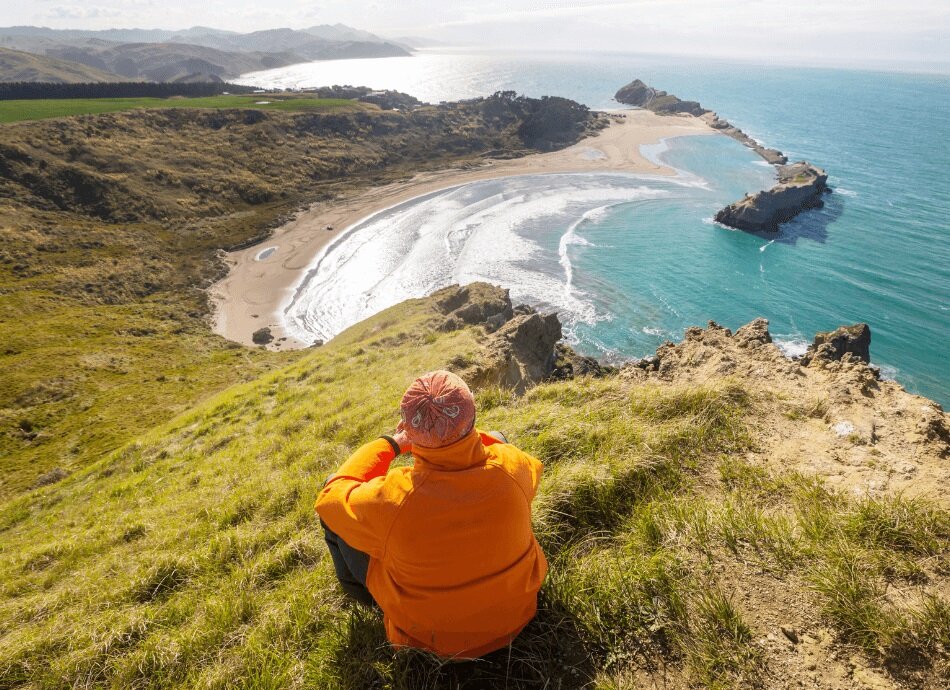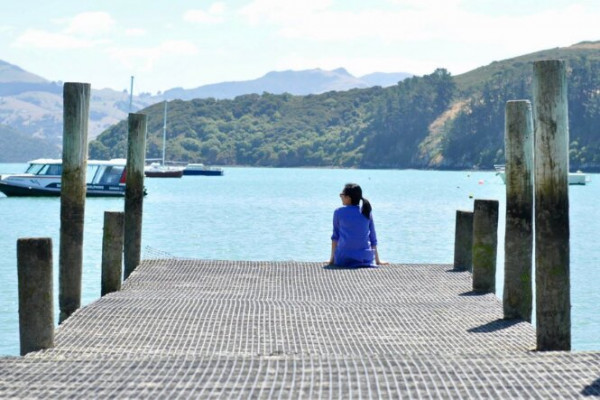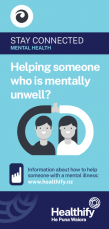Wishing everyone happy holidays and a joyful New Year from the Healthify team. Don't forget to Slip, Slop, Slap and Wrap!
Mental distress – what you need to know
Key points about mental distress
- The stress and strain of dealing with COVID-19, reading upsetting news stories or experiencing severe weather events are just some of the things that can cause mental distress and take a toll on your wellbeing and hauora in general.
- If you already have a diagnosed mental health condition, such as anxiety or depression, distressing events can sometimes have an even bigger impact on your wellbeing.
- The information provided here is intended for people who are experiencing a normal stress reaction to a difficult time rather than those with an existing mental health condition.

Before COVID-19 arrived in the country, mental distress was already on the rise in Aotearoa New Zealand. Results of the Mental Health in Aotearoa(external link) survey in 2018 found the following results:
- One in five adults aged 15 years and over are diagnosed with a mood and/or anxiety disorder.
- Mental distress is highest among young people (15 to 24-year-olds).
- People were more likely to be aware of mental distress in close friends than in neighbours, work colleagues or people they live with.
- The proportion of New Zealanders with high levels of mental distress is trending upwards over time.
- There’s a greater proportion of younger people in higher/more severe categories among anxiety and mental distress measures than older age groups (25 to 64-year-olds and 65+).
- There’s a lower proportion of young people who report coping with everyday stresses, than older age groups.
- 15 to 17-year-olds and 18 to 24-year-olds are more likely to report having long-term psychological conditions that affect their everyday activities and socialising than older age groups.
Surveys done during the COVID-19 pandemic showed it’s had both negative and positive impacts for mental health. Financial stress has added to mental distress, and young people were prone to depression and anxiety during and after lockdown. However, most people (9 out of 10) reported at least one positive experience during lockdown. Positive experiences included feeling pride in the ability to cope, having more time for exercise and hobbies, a stronger sense of community and improved whanau resilience.
Emotional support, connections to others and relationships with people and pets were helpful in lessening mental distress. However, it was found that smoking and drinking alcohol were linked to increased anxiety and increased mental distress.

Image credit: Healthify He Puna Waiora, NZ
When you experience mental distress, you might feel isolated, overwhelmed, worried, upset, unmotivated, have difficulty sleeping or find it hard to concentrate.
How often you’re feeling distressed, how bad it gets and how long it lasts can help determine the seriousness of your situation. Some common signs of distress include:
Changes in your sleep – You may be sleeping more than usual or have difficulty falling asleep or staying asleep.
Changes in weight/eating patterns – You may have lost or gained a significant amount of weight or be preoccupied with food, weight or body image.
Unexplained physical symptoms – Things like headaches, stomach problems, dizziness or chronic pain can sometimes be a sign of mental or emotional distress. A check-up with you healthcare provder GP can help work out the cause.
Difficulty controlling your emotions – Having trouble controlling your emotions, including anger, could be a sign you are stressed out and under the pump.
Obsessive/compulsive behaviours – Performing tasks in a compulsive manner for no logical reason or constantly worrying that something bad is going to happen can be a sign of mental distress.
Feeling tired all the time – Extreme tiredness and fatigue can occur when your body can’t handle an emotional overload and simply shuts down.
Memory problems – Forgetfulness can sometimes be a sign of mental distress. It can also be caused by other things like Alzheimer’s disease, a lack of sleep or hormonal changes due to menopause. A check-up with your healthcare provider can help determine the cause.
Not doing pleasurable activities – Feeling like you don’t want to go out or socialise can be a sign of mental or emotional distress. No interest or enjoyment of sex can also be a sign – however, it pays to get a physical check-up to rule out other causes.
If you, or somebody else, are distressed or finding it hard to cope there are many places to go to get help. You can talk to somebody at your medical centre or free phone or text 1737 any time of the day or night, or go to the 1737 digital hub(external link).
Find a mental health service within your area(external link).
Emergency helplines
Suicide crisis helpline(external link) 0508 828 865
Regional mental health crisis assessment teams – find the number to call in your region(external link)
Lifeline(external link) 0800 543 354 or text 4357
Alcohol drug helpline(external link) 0800 787 797 or text 868
Depression helpline(external link) 0800 111 757 or text 4202
Youthline(external link) 0800 376 633 or text 234 or email [email protected]
Apps reviewed by Healthify
You may find it useful to look at some Mental health and wellbeing apps.
Resources
Helplines and local mental health services(external link) Mental Health Foundation, NZ, 2022
Have a friend or family member who’s unwell? [PDF, 1.1 MB] Healthify He Puna Waiora, NZ, 2019
Apps
Mental health and wellbeing apps
References
- Mental health in Aotearoa – results from the 2018 Mental Health Monitor and the 2018/19 NZ Health Survey(external link) Health Promotion Agency, NZ, 2020
- Mental health and addiction in New Zealand(external link) Report of the Government Inquiry into Mental Health and Addiction, NZ, 2018
- Officer TN, Imlach F, McKinley E, et al. COVID-19 pandemic lockdown and wellbeing – experiences for Aotearoa New Zealand in 2020(external link) IJERPH 2022;19:2269
- Gasteiger N, Vedhara K, Massey A, et al. Depression, anxiety and stress during the COVID-19 pandemic – results form a New Zealand cohort study on mental well-being(external link) BMJ Open 2020;11:e045325
- Nicolson MN, Flett JAM. The mental wellbeing of New Zealanders during and post-lockdown NZMJ(external link) 2020;133(1523):110-112
- 10 signs of an ailing mind(external link) WebMD, US, 2006
- What are the causes and symptoms of emotional distress?(external link) Medical News Today, 2020
Brochures

Mental Health Foundation, NZ, 2022

Healthify He Puna Waiora, NZ and Mediboard, 2023
Credits: Healthify editorial team. Healthify is brought to you by Health Navigator Charitable Trust.
Reviewed by: Ashley Macpherson, Clinical Psychologist
Last reviewed:
Page last updated:





